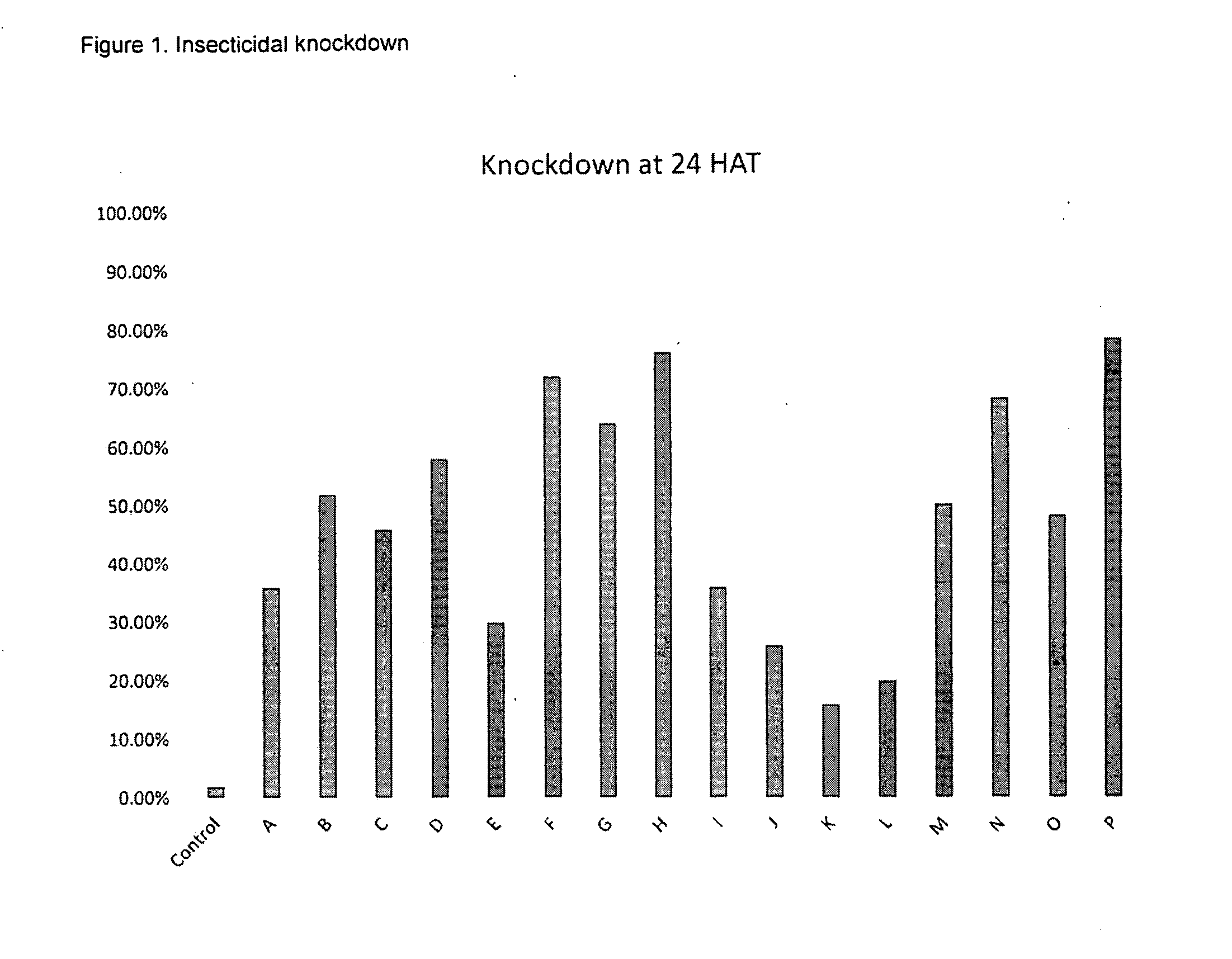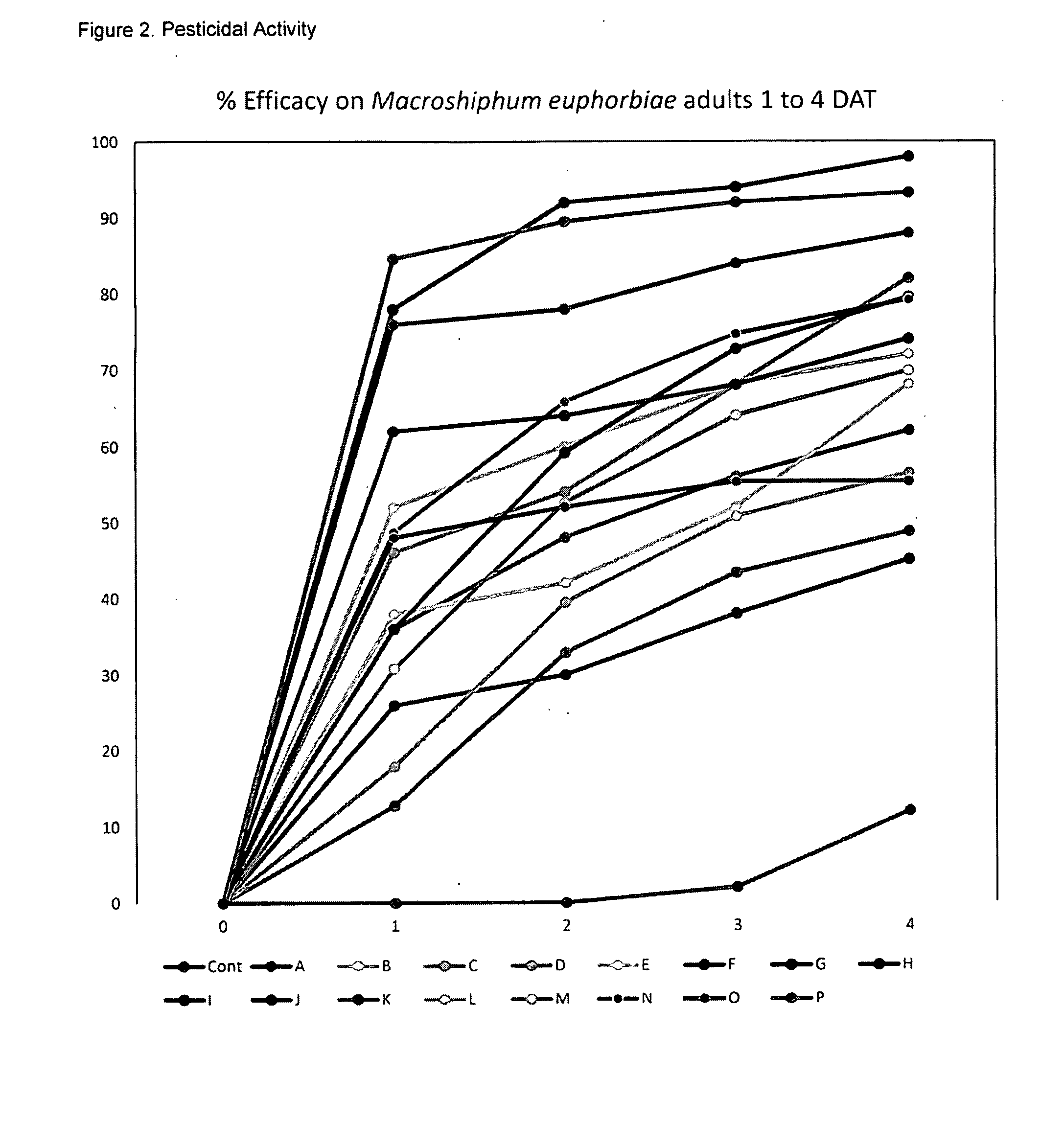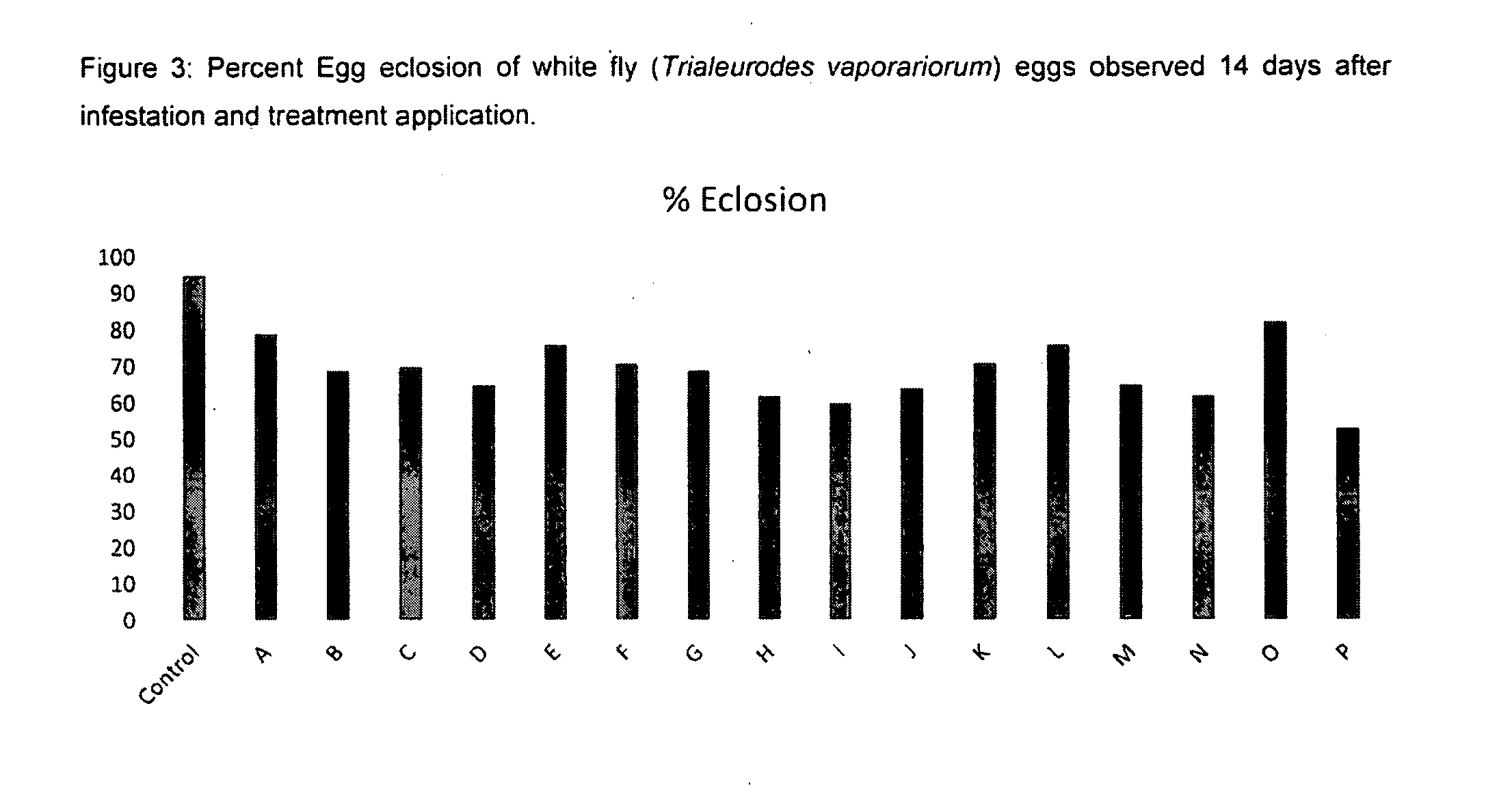Pest control formulation composed of Beauveria bassiana, Cold Pressed Neem Oil and Refined Pyrethrum Extract, and methods of making and using same
a technology of beauveria bassiana and pyrethrum, which is applied in the field of compositions, can solve the problems of tabaci, f. occidentalis /i>is difficult to control with insecticides, and the eventual loss of pesticide effectiveness of farmers, and achieves effective or more rapid knockdown of pesticidal activity, prevent or reduce feeding, and prevent or reduce eclosion of eggs.
- Summary
- Abstract
- Description
- Claims
- Application Information
AI Technical Summary
Benefits of technology
Problems solved by technology
Method used
Image
Examples
example 1
Insecticidal Knockdown Activity
[0064]This example illustrates the insecticidal knockdown activity of combinations of cold pressed neem oil with refined pyrethrum extract and Beauveria bassiana strain GHA against adult aphids, when compared with knockdown activity of Beauveria bassiana strain GHA alone, cold pressed neem oil alone and refined pyrethrum extract alone. Sixteen solutions were prepared: ‘Solution A’ included 1% cold pressed neem oil by weight, 0.25% refined pyrethrum extract and 1×108 spores per ml Beauveria bassiana strain GHA, and 10% nonylphenol ethoxylate by weight; ‘Solution B’ included 1% cold pressed neem oil by weight, 0.5% refined pyrethrum extract and 1×108 spores per ml Beauveria bassiana strain GHA, and 10% nonylphenol ethoxylate by weight; ‘Solution C’ included 2% cold pressed neem oil by weight, 0.25% refined pyrethrum extract and 1×108 spores per ml Beauveria bassiana strain GHA, and 10% nonylphenol ethoxylate by weight; ‘Solution D’ included 2% cold press...
example 2
Pesticidal Activity
[0067]This example illustrates the pesticidal activity of combinations of cold pressed neem oil with refined pyrethrum extract and Beauveria bassiana strain GHA against adult aphids, when compared with pesticidal activity of Beauveria bassiana strain GHA alone, cold pressed neem oil alone and refined pyrethrum extract alone. Sixteen solutions were prepared: ‘Solution A’ included 1% cold pressed neem oil by weight, 0.25% refined pyrethrum extract and 1×108 spores per ml Beauveria bassiana strain GHA, and 10% nonylphenol ethoxylate by weight; ‘Solution B’ included 1% cold pressed neem oil by weight, 0.5% refined pyrethrum extract and 1×108 spores per ml Beauveria bassiana strain GHA, and 10% nonylphenol ethoxylate by weight; ‘Solution C’ included 2% cold pressed neem oil by weight, 0.25% refined pyrethrum extract and 1×108 spores per ml Beauveria bassiana strain GHA, and 10% nonylphenol ethoxylate by weight; ‘Solution D’ included 2% cold pressed neem oil by weight, ...
example 3
Prevention of Egg Emergence
[0069]This example illustrates the prevention of egg emergence of combinations of cold pressed neem oil with refined pyrethrum extract and Beauveria bassiana strain GHA against whiteflies, when compared with pesticidal activity of Beauveria bassiana strain GHA alone, cold pressed neem oil alone and refined pyrethrum extract alone. Sixteen solutions were prepared: ‘Solution A’ included 1% cold pressed neem oil by weight, 0.25% refined pyrethrum extract and 1×108 spores per ml Beauveria bassiana strain GHA, and 10% nonylphenol ethoxylate by weight; ‘Solution B’ included 1% cold pressed neem oil by weight, 0.5% refined pyrethrum extract and 1×108 spores per ml Beauveria bassiana strain GHA, and 10% nonylphenol ethoxylate by weight; ‘Solution C’ included 2% cold pressed neem oil by weight, 0.25% refined pyrethrum extract and 1×108 spores per ml Beauveria bassiana strain GHA, and 10% nonylphenol ethoxylate by weight; ‘Solution D’ included 2% cold pressed neem o...
PUM
 Login to View More
Login to View More Abstract
Description
Claims
Application Information
 Login to View More
Login to View More - R&D
- Intellectual Property
- Life Sciences
- Materials
- Tech Scout
- Unparalleled Data Quality
- Higher Quality Content
- 60% Fewer Hallucinations
Browse by: Latest US Patents, China's latest patents, Technical Efficacy Thesaurus, Application Domain, Technology Topic, Popular Technical Reports.
© 2025 PatSnap. All rights reserved.Legal|Privacy policy|Modern Slavery Act Transparency Statement|Sitemap|About US| Contact US: help@patsnap.com



